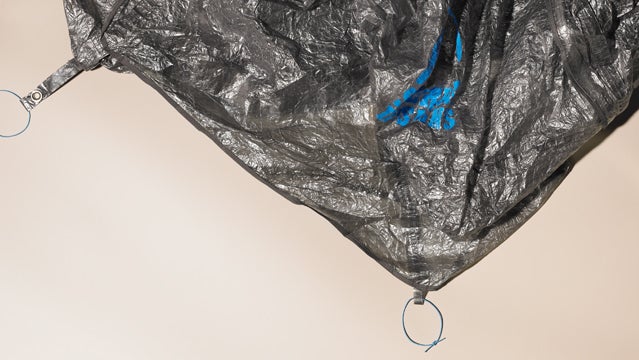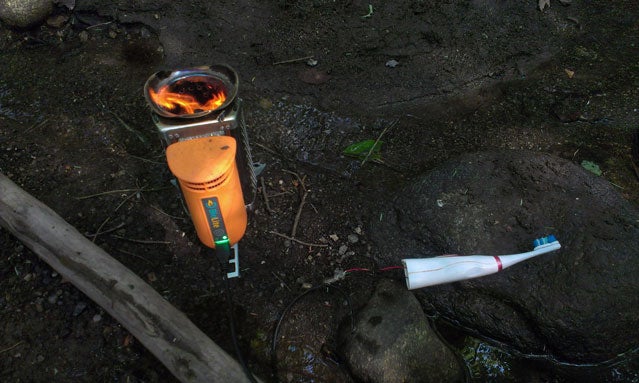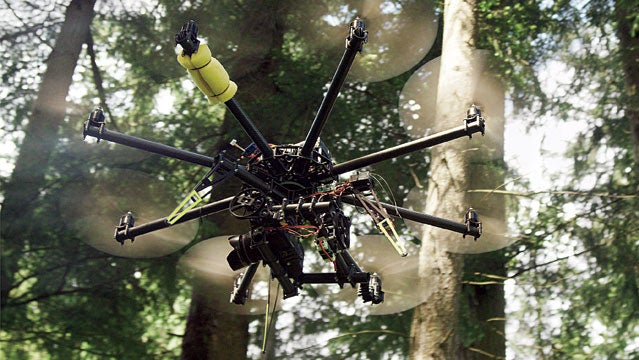The Technology That Could Change the Way You Hike
Backpacking and high tech don’t always go hand in hand. All you need are a pair of hiking boots, a sturdy pack and a mind ready to revel in nature. But if you believe manufacturers, a little bit of tech can make the whole experience a lot more interesting
From super-lightweight fabrics to sunscreen you can swallow, we’ve highlighted a few innovative ideas that could change the way you spend time in the backcountry.
Hiking Tech: Waterproof Cell Phones

Cameras took an evolutionary leap forward into the aquatic world with the release of the and its waterproof case. Suddenly you could hike a 14er in a rainstorm and document every tortuous minute.
Next step: Smartphones. The mobile devices have become important backcountry tools, but they’re victims of the elements. Forget to wrap your phone in plastic during a river crossing and the piece of high tech technology becomes nothing more than dead weight in your pack.
In July, Samsung unveiled a new phone aimed at recreationists playing outdoors. The Galaxy S4 Active is “sealed” against water, says spokesperson Wendy Dominguez. Phones sealed against the elements still occupy a niche market in the U.S., but that might be changing, albeit slowly. And if you can’t wait for the technology to catch up, there are a handful of waterproof cases that will do the trick.
Hiking Tech: Uber-Lightweight Tents

For years, tents and other backpacking essentials have been evolving to become lighter and lighter. The next step might just be high tech fibers that pack down very small without sacrificing comfort. ’ new Mojo UFO is about as light a tent as the company can currently make while keeping it fully enclosed, says Sierra Designs Public Relations Manager Scott Kaier.
The alien-looking Mojo UFO, with its Cuben Fiber shell and carbon-fiber tent poles, weighs in at 1 pound, 11 ounces and sleeps two people. It’s also fairly roomy, with an interior that measures more than 26 square feet—not to mention an $1,800 price tag.
Hiking Tech: Sunscreen in a Pill

In 2001, researchers from King’s College London discovered a compound made by coral that could be synthesized into tablet-form sunscreen.
An algae living within the coral produces a compound that, when transported to its host, protected both organisms from UV damage. Fish feeding on the coral also benefited from the natural sunscreen, indicating that the compound could be passed through the food chain without losing its protective properties.
“This led us to believe that if we can determine how this compound is created and passed on, we could biosynthetically develop it in the laboratory to create a sunscreen for human use, perhaps in the form of a tablet, which would work in a similar way,” says Paul Long, senior lecturer from the Institute of Pharmaceutical Science at King’s College London.
Last winter, the college entered into an agreement with the UK-based skincare company Aethic to develop the first sunscreen based on these amino acids. The next step for the researchers is to test the efficacy of this compound using human skin models. The product still isn’t on the market.
Hiking Tech: SAR Drones

While drones are most notorious for their role in military conflict, they could be used for a more innocuous purpose: saving hikers’ lives.
UAVs, or unmanned aerial vehicles, aren’t at that point yet, but a handful of sheriff’s offices around the country are testing the machines’ limits for search and rescue missions.
Ben Miller, the unmanned aerial system program director for Mesa County Sheriff’s Office, doesn’t think the drones will replace SAR volunteers or real helicopters anytime soon, but the technology offers an inexpensive alternative to current search methods. And for agencies strapped for cash, a UAV that can fly for a fraction of the cost means more resources devoted to finding the missing hiker.
Even though they’re (relatively) inexpensive, the drones have limited flight times— hasn’t found a person yet during the six SAR missions it’s participated in— and there’s also the maze of FAA permits would-be drone pilots must navigate. Miller calls the process, which took more than 18 months, “a complete mess.”
Hiking Tech: Backcountry Electronics Chargers

All the tech in the world is no good if users don’t have a way to power it. A few companies are trying to overcome that obstacle with devices that convert heat to electricity. In June, one early front-runner, Vodafone, revealed its Power Pocket, a charger for sleeping bags and clothes that uses body heat to power your phone, debuting it at music festivals around the U.K.
, whose company motto is “Energy Everywhere,” develops wood burning stove that uses its own thermal energy to charge electronics. BioLite currently makes the backpack-friendly CampStove, which lets you cook while powering your phone off-grid, and is developing a larger version to bring electricity to developing countries.


